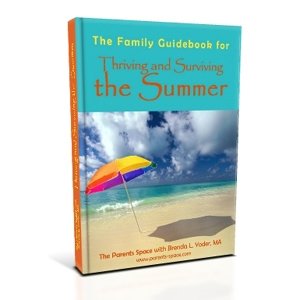I’m a 30 year old wife and mother. My two great loves are my family and writing, and blogging allows me to combine the two.
- |
- Web
- |
- |
- |
- Google+
- |
- More Posts (6)
 My son is seven years old. In seven year he has accumulated a lot of toys. Naturally, there are many that he has grown out of, and surprisingly there a few that he hasn’t. For example, my sister bought him a Brio starter train set for his first birthday and over the years it has expanded so much that he has a giant toy box dedicated to it.
My son is seven years old. In seven year he has accumulated a lot of toys. Naturally, there are many that he has grown out of, and surprisingly there a few that he hasn’t. For example, my sister bought him a Brio starter train set for his first birthday and over the years it has expanded so much that he has a giant toy box dedicated to it.
He could literally (and sometimes does) build a track that stretches from the front door, past the living room, through the kitchen and into the conservatory. Toys like that are a worthy investment because, even though we’ve now stopped adding to it, I’m sure he’ll be playing with it for another couple of years yet.
On the other hand, there are ‘fad toys’, which have been the latest craze for Christmas each year and then are replaced by the following Christmas by the next craze.
Since starting school he has been through Beyblade, Bakugan, Lego Ninjago, Hexbugs, Zhu-Zhu Pets and more.
It’s frustrating for us parents, because we don’t want them to be the only one of their friends without said toys, but we buy them knowing that they have no longevity.
My sons ‘fad toys’, until recently, were literally collecting dust in his room and, tired of him telling me he’s bored when he have a ridiculous amount of toys to play with, I devised three ways to get him to play with them again – and they work!
1) Give a small number of toys to charity regularly
You may wonder how giving away toys helps kids to play with old ones, but trust me; at the prospect of losing toys, they suddenly become interesting again. At the end of each month I take two old toys that he hasn’t touched all month and put them in a bag for the charity shop. I tell him they are going and then they go. Before I used to just threaten to take them, but empty threats are no good. After a couple of months he realised I was serious and suddenly he made an effort to play with a more varied selection of the old toys that remained. As a side note, you’ll soon realise which old toys they genuinely aren’t interested in any more as they still won’t play with them, even at the prospect of losing them, so these toys should go too.
2) Put old toys somewhere they can be seen but not reached
My son is running out of storage space in his room so we have a few old toys on top of the wardrobe. We recently got a bunk bed and he sleeps on top, so now he can easily see what’s on top of the wardrobe, but can’t get to them. We noticed that he’s started asking my husband and me to get some of the toys down for him. Toys he’d long forgotten about! To kids something they seemingly can’t have soon becomes the only thing they want! So now when he asks for something, I will take it down and replace it with another toy he has long forgotten about. Sure enough after a couple of days of staring at that new out-of-reach toy, he’ll ask for that one too. It’s tedious to have to keep getting stuff down, but it works.
3) Don’t buy new toys too often
This may seem like an obvious one, but it’s easy to forget. My son’s birthday is nine days after Christmas so he is literally inundated with presents over a two week period, and then he has eleven months of nothingness. To compensate, we do buy him things throughout the year, but we’ve now decided there should be set times, like every three to four months. Sounds a bit strict, I know, but the problem with our son, and I think most children, is that as soon as they get something new, it becomes their favourite, and they forget about everything else (including the toy you bought the previous week). By limiting the frequency of new toys, they with learn to appreciate the ones they already have a little better. And if nothing else, it least they’ll be forced to play with it a little longer!
Photo credit: mzacha – rbgstock.com
Tiny URL for this post:









